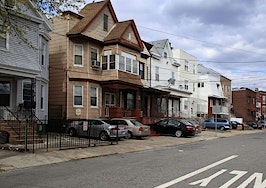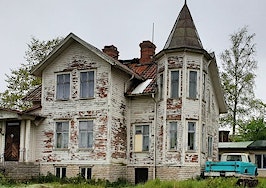About 1.6 million residential properties in the U.S., or about 1.6 percent of all homes, are currently vacant, according to a new report from Attom Data Solutions.
During the fourth quarter of 2020, properties in the process of foreclosure decreased 7.3 percent from the previous quarter to a total of 200,065 properties. The number of properties sitting empty during this quarter also declined 4.4 percent from the third quarter to about 7,612 properties.
Meanwhile, the percentage of pre-foreclosure properties abandoned into the status of “zombie” properties increased just slightly, from 3.7 percent in the third quarter to 3.8 percent in the fourth quarter, representing one in every 13,100 homes in the U.S.
With a federal moratorium on foreclosures currently in place for government-backed mortgages through the end of December, about 70 percent of home loans have been protected from foreclosure during the pandemic. Some private lenders have also offered mortgage extensions, which has helped keep zombie foreclosure rates low over the past few months.

Todd Teta | Attom Data Solutions
“Zombie foreclosures have been barely an issue around most of the country for over a year, and they’re even less of one now,” Todd Teta, chief product officer with ATTOM Data Solutions, said in a statement. “A surprisingly strong housing market and a temporary ban on foreclosures continues to leave most neighborhoods without a single such property. All that could change in a flash when foreclosures are allowed to resume or if the coronavirus takes a toll on the market. But for now, things are steady as they go, with the overall numbers down and the rates of zombie properties pretty much unchanged.”
The Midwest and South had the highest zombie foreclosure rates during the third quarter, with rates highest in Iowa (15.5 percent of vacant properties in the foreclosure process), Kentucky (12 percent), Missouri (10.2 percent), Georgia (9.6 percent) and Maryland (9.2 percent).

States with the lowest zombie foreclosure rates were largely in the Northeast and West, including Utah (1.3 percent of vacant properties in the foreclosure process), Colorado (1.6 percent), New Jersey (1.7 percent), Idaho (2.2 percent) and California (2.2 percent).
In terms of number count, states with the highest numbers of zombie properties during Q4 were largely in the Northeast and Midwest in areas hit hard by the pandemic. New York posted the highest number of zombie properties at 2,131, followed by Florida (1,027), Illinois (934), Ohio (836) and New Jersey (346).

Rick Sharga | RealtyTrac
“Some of the states with the highest rate of zombie foreclosure properties are also states that have been among the hardest hit by the COVID-19 pandemic,” Rick Sharga, executive vice president for RealtyTrac, said in a statement. “When the government bans on foreclosure activity expire, it wouldn’t be a surprise to see the number of defaults in those states increase more rapidly than in other parts of the country, and the number of zombie foreclosure properties rise more dramatically in those states as well.”
The Northeast and Midwest also had the highest ratios of zombie foreclosures as a percentage of all residential properties, with the greatest proportion of zombie foreclosures concentrated in New York (one in 1,941 properties), Illinois (one in 4,243), Ohio (one in 4,592), Florida (one in 6,757) and New Jersey (one in 7,692).
Among 158 metro areas with at least 100,000 residential properties and at least 100 properties facing foreclosure, the highest zombie foreclosure rates were located in Kansas City, Missouri (17.2 percent of properties in the foreclosure process); Peoria, Illinois (16.3 percent); Omaha, Nebraska (15 percent); Davenport, Iowa (13.8 percent); and Cleveland, Ohio (31.2 percent).
In major metro areas with at least 500,000 properties, the lowest zombie rates were found in San Francisco (0.8 percent of foreclosure properties); Charlotte, North Carolina (1.4 percent); Denver (1.7 percent); Philadelphia (1.7 percent); and New York (1.8 percent).
Overall, states with the highest vacancy rates across all residential properties are in Kansas (2.7 percent), Mississippi (2.7 percent), Oklahoma (2.6 percent), Tennessee (2.6 percent) and Indiana (2.5 percent).












